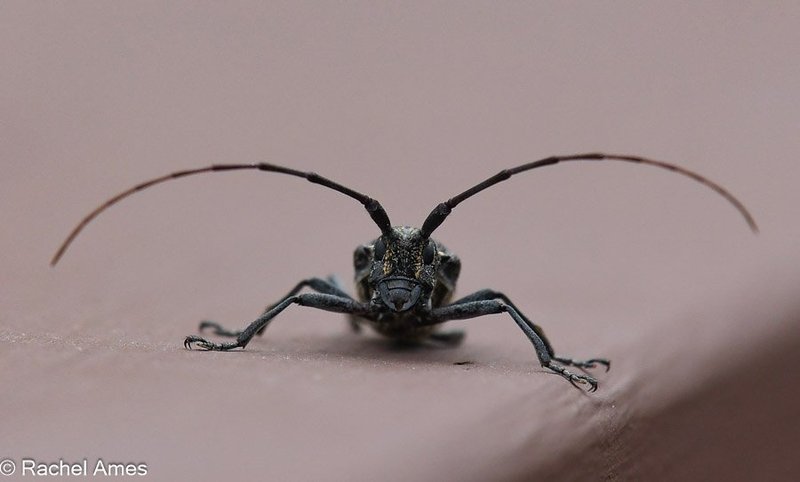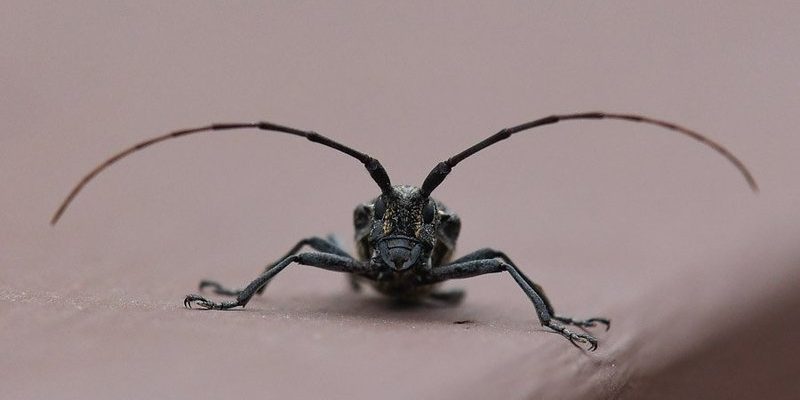
Have you ever stumbled upon a creature that completely captures your imagination? Enter the Pine Sawyer Beetle, a fascinating insect that plays a significant role in its ecosystem. With its striking appearance and unique habits, this beetle is more than just another bug lurking under the bark of your favorite pine trees.
The Pine Sawyer Beetle, known scientifically as Monochamus galloprovincialis, is not only remarkable for its looks but also for its life cycle and the impact it has on forests. Let’s dig into what makes this beetle tick, from its habitat and diet to its interaction with humans and the environment. You might be surprised by the stories these tiny creatures have to tell!
Physical Characteristics
At first glance, the Pine Sawyer Beetle can be mistaken for a small piece of art. These beetles are typically 1 to 2 inches long, sporting a long and slender body that’s often decorated in hues of brown and black. What sets them apart, however, are the long antennae that can be up to three times the length of their body! Imagine them waving like tiny flags in the air, searching for chemical signals from potential mates.
One of the most striking features is their unique markings. The Pine Sawyer Beetle has pale spots on its back that can resemble the patterns of tree bark. This clever camouflage helps them blend in with their surroundings, making it harder for predators to spot them. You might say they’re the ninjas of the insect world, hiding in plain sight!
Interestingly, the color and size can vary based on their environment and age. Younger beetles tend to be lighter, while older specimens can have darker, more intense coloring. This change over time mirrors their life cycle and the experiences they encounter in their natural habitat.
Lifecycle and Habitat
The lifecycle of the Pine Sawyer Beetle is an intricate dance of transformation. They begin as tiny eggs laid in the crevices of pine trees. Once the eggs hatch, the larvae burrow into the wood, munching away as they grow. This stage can last for several months to a few years, depending on environmental conditions. Think of it as their version of a lengthy childhood, hidden away from the world while they develop.
As larvae, they play an essential role in decomposing dead or dying trees, contributing to the forest’s health. This means that while they may seem destructive, they are truly helping to recycle nutrients back into the soil. Once they’re ready, they emerge as adults, ready to take on the world—or at least the nearest pine tree!
Pine Sawyer Beetles primarily inhabit coniferous forests, especially those with abundant pine trees. They prefer warm, dry climates but can adapt to various environments. This adaptability helps them thrive in different locations, making it possible to find them across large geographical areas. If you’re walking through a pine forest, keep your eyes peeled; you never know what might be lurking beneath the bark!
Diet and Feeding Behavior
You might be wondering what fuels the Pine Sawyer Beetle during its active months. These beetles are primarily herbivorous, with a diet that consists mainly of the wood and bark of pine trees. Using their strong mandibles, they chip away at the wood, searching for the soft, nutrient-rich inner layers. It’s like they’re gourmet chefs, delicately selecting the best parts of their dinner!
This feeding behavior can be a double-edged sword. While they contribute to the decomposition and recycling of nutrients, their appetite can lead to damage in living trees, especially those already weakened by disease or other stressors. Forests rely on a delicate balance, and the Pine Sawyer Beetle’s role in this ecosystem illustrates both the beauty and complexity of nature.
Interestingly, beyond wood, these beetles also consume tree sap, which offers them essential nutrients. You could say it’s their version of a snack break! They have special adaptations that allow them to access the sweet sap, helping them thrive in environments where food sources can fluctuate throughout the seasons.
Impact on the Environment
The Pine Sawyer Beetle is a prime example of nature’s interconnectedness. While they have a reputation for causing damage to trees, they also offer undeniable benefits. As they feed, they create pathways for other organisms, such as fungi, which can help decompose wood and return vital nutrients to the soil.
However, when populations multiply, they can pose a significant threat to forestry and timber industries. Heavy infestations can lead to tree mortality, affecting entire ecosystems and economies dependent on healthy forests. This is where the challenge lies—finding a balance between allowing these beetles to thrive while managing their populations to protect forests.
To mitigate the potential harm, forest management practices often include monitoring for beetle populations and implementing strategies to minimize infestations. This proactive approach helps maintain the health of the forest without entirely disrupting the natural life cycle of these fascinating beetles.
Human Interaction and Management
As you explore the natural world, you may encounter Pine Sawyer Beetles firsthand. Most people don’t realize these insects are harmless to humans, despite their somewhat intimidating appearance. In fact, they rarely pose any threat, and their life cycle is crucial for maintaining healthy forest ecosystems.
However, if you’re a tree farmer or someone with a vested interest in forestry, managing the Pine Sawyer Beetle population becomes essential. There are several methods to keep their numbers in check without resorting to harmful pesticides. Techniques like ensuring tree health, removing dead or dying trees, and using traps can help control their populations effectively.
Education is a vital part of managing these beetles. Understanding their behaviors and lifecycle empowers landowners and forestry professionals to make informed decisions about their management. By fostering a healthy respect for these insects, we can co-exist with them while maintaining the beauty and vitality of our forests.
Interesting Facts
| Scientific Name: | Monochamus galloprovincialis |
| Size: | 1 to 2 inches |
| Habitat: | Coniferous forests, primarily pine trees |
| Diet: | Wood and bark of pine trees; also tree sap |
| Lifespan: | 1 to 2 years, depending on environmental conditions |
| Appearance: | Long antennae, brown and black coloration, pale spots |
FAQ
Are Pine Sawyer Beetles harmful to humans?
No, Pine Sawyer Beetles pose no danger to humans. They are not aggressive and do not bite or sting. Their primary focus is on trees, and they play an essential role in their ecosystems. While they might look intimidating, they’re generally harmless to us!
How can I recognize a Pine Sawyer Beetle?
You can identify a Pine Sawyer Beetle by its long, slender body, which is usually between 1 to 2 inches long. They have long antennae that can be much longer than their bodies and distinct pale markings on their dark exoskeletons. If you spot something that fits this description in a coniferous forest, there’s a good chance you’ve found one!
What do Pine Sawyer Beetles do during winter?
During the winter, Pine Sawyer Beetles typically enter a dormant state, seeking shelter in the bark of trees or under debris on the forest floor. They slow down their activity to conserve energy and survive until spring when temperatures rise, and they become more active again. This rhythm of dormancy and activity is crucial for their survival.
How do Pine Sawyer Beetles affect tree health?
Pine Sawyer Beetles can affect tree health significantly, especially when populations are high. Their feeding can weaken trees, making them more susceptible to diseases and pests. On the flip side, their role in decomposing dead and dying trees benefits the ecosystem, so it’s essential to find a balance in their management.
Can I find Pine Sawyer Beetles in my garden?
While Pine Sawyer Beetles primarily inhabit natural coniferous forests, you might find them in gardens with pine trees or similar conifers. If you do spot them, it’s essential to monitor their numbers, especially if you have a lot of pine plants. Luckily, they usually don’t harm healthy trees significantly.
What time of year are Pine Sawyer Beetles most active?
Pine Sawyer Beetles are most active in the warmer months, typically from late spring through summer. During this time, they emerge from their larval stage, mate, and lay eggs. Their activity decreases as temperatures drop in the fall and winter months.
What should I do if I find a lot of Pine Sawyer Beetles in my trees?
If you notice a large number of Pine Sawyer Beetles in your trees, it’s advisable to consult a local forestry expert or pest control specialist. They can help assess the situation and recommend appropriate management strategies to reduce their population without harming the environment.
Do Pine Sawyer Beetles have natural predators?
Yes, Pine Sawyer Beetles do have natural predators, including birds, other insects, and some mammals. These predators help keep their population in check. However, when conditions favor beetle reproduction, their numbers can quickly rise, sometimes outpacing natural predation. This highlights the importance of maintaining a balanced ecosystem.

